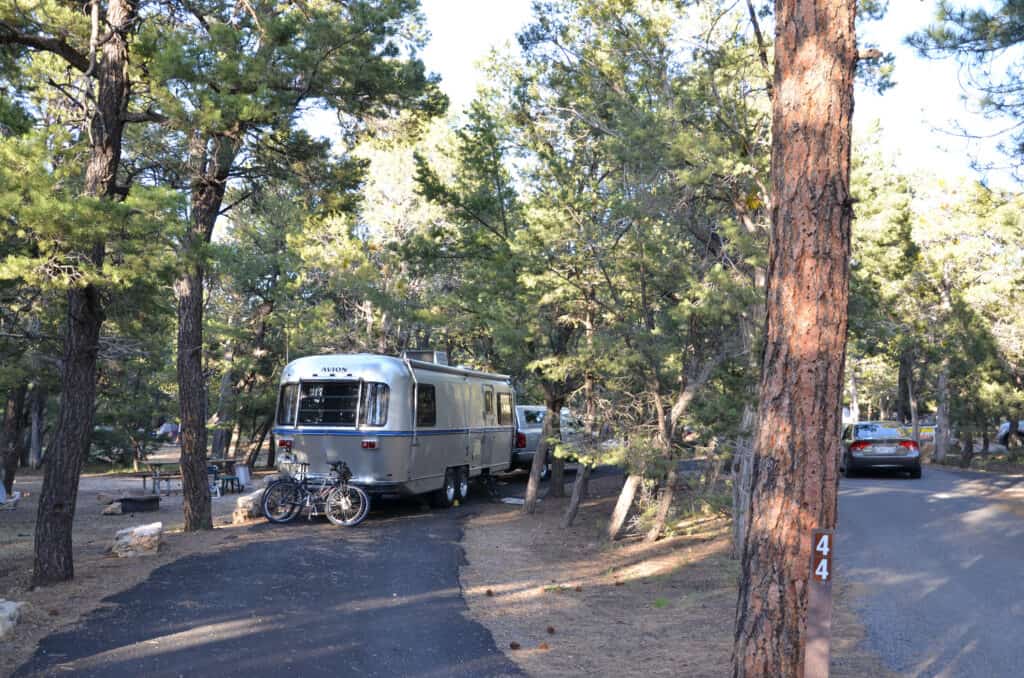
Is Backing Up A Trailer Harder Than It Looks?
Let’s face it, there are many new RV owners on the road today that have no experience driving or backing up a trailer or fifth wheel, and this lack of experience is evident by the amount of visible damage to the sides and basements on their rigs.
As a case in point, we were camped in a Thousand Trails Park and watched a couple arrive in a pick-up truck pulling a large fifth wheel, which was followed by a full-size SUV. The first sign that they were newbies was that the woman in the SUV never got out of her car to assist her partner in the backing process. She just sat in the SUV and watch the spectacle unfold, as did the rest of us.
The wrong way to back up a trailer
The driver of the pickup (who quickly earned the nicknamed “Crash”) clearly didn’t know where the sides or corners of the fifth wheel were, because when he first arrived in the park, he pulled into a drive-through space so close to a tree that the large branches drug along the side of his fifth wheel.
His partner in the SUV just sat and watched the branches scraping along the side of the trailer and did nothing. This obviously caught my attention because we were parked adjacent to the pull-through space, and I was watching to see if I needed to move my car to give him more room to maneuver.
I was shocked that Crash had parked so close to the tree. There was plenty of room in that pull-through space for his rig, but he didn’t seem to know where the sides of the trailer were in relation to the pick-up.
Where he stopped, there was no room to extend his living room slide-out because it was already touching the tree trunk, but if he had simply pulled forward a few feet, his fifth wheel would have been nicely spaced in the site, lined up perfectly with the sewer, water, and electrical connections, and the living room slide would have cleared the tree. Whatever additional damage that might have been done by the branches was already done, so pulling a few feet forward would not have further damaged the fifth wheel.
But for some unknown reason, Crash decided to move to a different space. He chose a back-in space just on the other side of the road from the pull-through space where his wife parked the SUV while she watched the spectacle unfold. Fortunately, he had almost half a football field of open space in which to maneuver his truck and trailer but unfortunately, he needed every inch of it.
Backing up a trailer too fast
He pulled into the roadway in the perfect position to begin backing the fifth wheel into the empty space, but he clearly didn’t know how to maneuver the truck to get the fifth wheel to go where he needed it to go. To those of us who were watching, we could see that he was going too fast and turning the steering wheel too much. Each time the trailer would quickly crank around and start going in the wrong direction.
From that position, there was no way to correct it, except to pull forward and start over. He pulled forward, backed up, pulled forward, backed up, pulled forward, backed up, and repeated the process over and over again. Each time he seemed to be going faster and the results were appalling.
At one point, the fifth wheel was going about 90 degrees in the wrong direction and it nearly broadsided the trailer in the space next to the one in which he was trying to park. The owner of that trailer jumped out of his rig and ran to alert the driver that he was definitely going in the wrong direction and about to hit his trailer. I believe he offered to help but must have been rebuffed, because he soon returned to his own trailer and it made me wonder if the woman in the SUV hadn’t had similar experiences in the past.
During this horrific backing spectacle, which went on for about forty minutes, the driver hit a picnic table with his truck, backed into the sewer venting pipe twice, ran over the sewer connection, and backed into the brush behind the site multiple times, all after dragging the trailer along the tree branches in the first pull-through site.
It looked like a destruction debris and all the while his partner sat in the SUV, I couldn’t help but wonder if this was a rented fifth wheel. To compound the problem, he was trying to park in a space on the right side of the road as opposed to an open RV space that was available on the left side of the road. The left spot would have given him a view of the fifth wheel from his truck, but for some reason, he chose the harder location on the right side of the road.

RV newbie mistakes
Now, I have cruelly criticized this driver and perhaps unfairly maligned him as “Crash”, but I am the first to admit that I would not have done any better. In fact, one of the reasons we drive a Class A motorhome rather than a travel trailer or fifth wheel is my fear of backing an articulated vehicle. Backing up a trailer is a learned skill and I just never felt confident doing it. Some experienced RVers and truckers make it look easy, but it’s not.
I have been instructed that all you need to do to back a trailer is put your hand on the bottom of the steering wheel and move your hand in the direction you want the back of the trailer to go. Go slow, make small adjustments, and use a spotter if available. If you do all that, the backing procedure should go fairly well, but that was not my experience.
When I was a young adult, I worked in the shipping department at a manufacturing firm and my duties occasionally required me to back a semi-truck up to the loading dock. I hated backing these 45′ long trailers and frankly I was terrible at doing so. Just like Crash, I needed an empty parking lot just to maneuver the truck into the right position. Fortunately, I never hit another truck or car, but it took me forever to get a trailer positioned correctly on the dock, and I was a nervous wreck when I got done, so I certainly understand this man’s frustration.
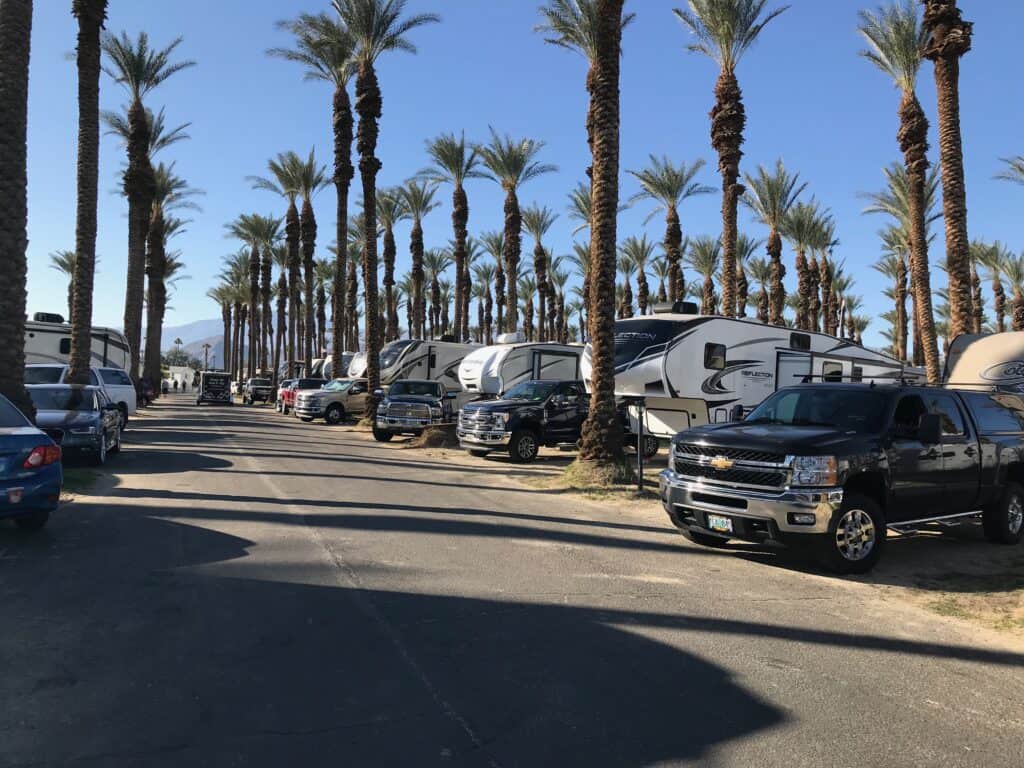
Crowded campgrounds
But the reality is, as an RVer, you don’t always have a football field of open space to accommodate backing your rig. We have all been in crowded campgrounds where there’s virtually no extra space, and it requires precise backing skills in order to correctly park any RV.
Researching RV LIFE Campgrounds ahead of time will give you a better idea of how much room you will have at the campsite, however, you may still have other unforeseen obstacles.
If you’re not dodging other people’s cars and trucks, there are the trees, utility hookups, landscaping features, light poles, or other obstacles that limit maneuverability, and to make matters worse, there are always people watching you.
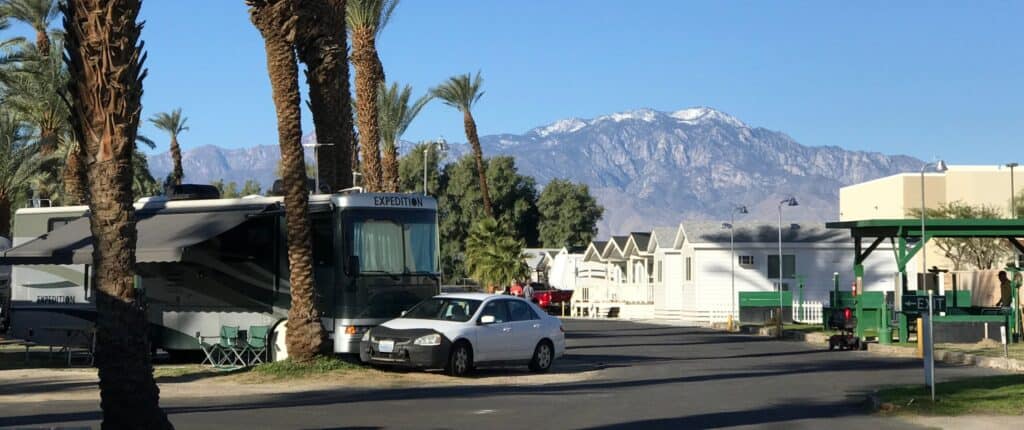
Use a spotter
After owning a Class A motorhome for over 20 years, I am very confident backing it into any available RV spot, but I never do it alone. My traveling partner watches for overhanging branches, and she watches ALL the corners and sides of the rig. She communicates with me via clear hand signals that she has perfected over the years.
I trust her implicitly to direct me into any site. On several occasions, she has directed me to the only place within the site that would allow the slides to be extended without striking an obstruction.
At Crater Lake National Park, the site was so narrow there was a tree within 2 inches on both sides of the rig after the slide-outs were extended. At a park in Georgia, the water hookup was so close to the back of the living room slide that I could barely screw the hose onto the faucet, but we couldn’t pull the coach forward because a tree on the opposite side of the rig was in the way.
Both of these examples required slow, precise backing and navigating skills, and a spotter who had an accurate understanding of the location and extension width of the slide-outs. These skills and this knowledge take time to develop.
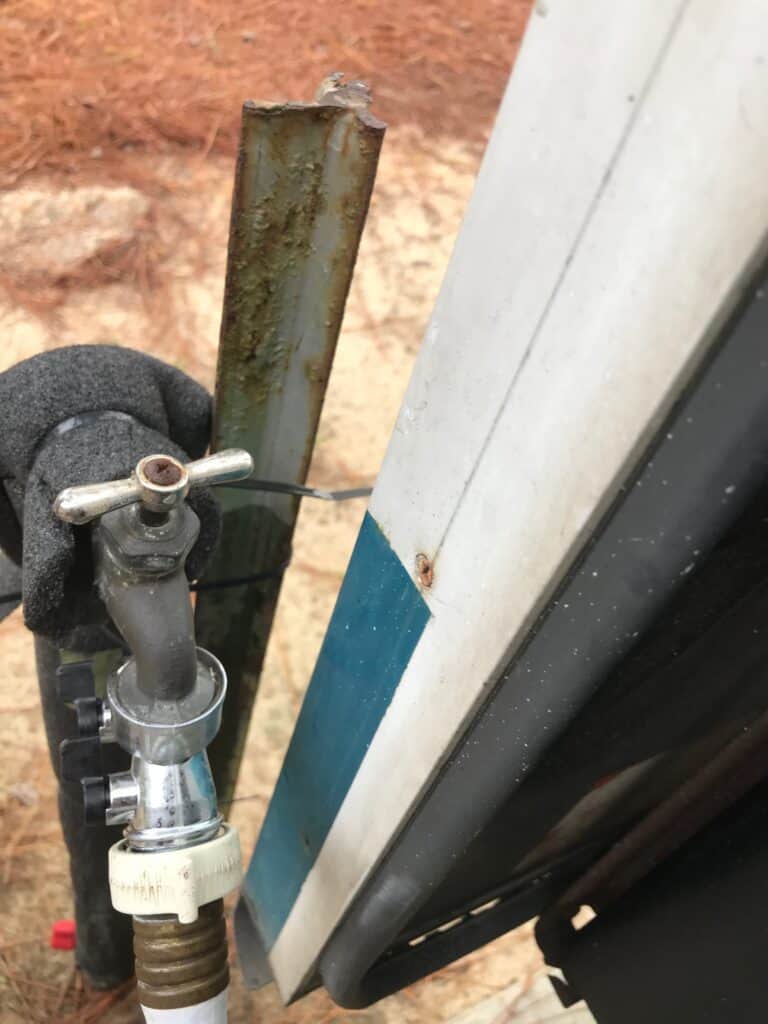
Practice backing up a trailer
New RV owners simply don’t have these technical skills, and people towing fifth wheels, travel trailers, and campers need even more backing skills than Class A and Class C owners. Where can people acquire these skills without the public spectacle of trying to master the techniques in a crowded RV park?
If you can’t attend RV School, then at least take your new RV to an empty parking lot and practice driving, turning, and especially backing up your new RV. Set-up several cardboard boxes, as “safe to hit” obstacles. You’ll be amazed how many times you think you’ve cleared an obstacle only to hear the cardboard box dragging along the pavement and learn that your turn was poorly executed and you hadn’t allowed enough room for your trailer.

A parking lot or a large open field are the only safe places to learn about your rig’s turning circumference, and how much “tail whip” it has when making a 90-degree turn like you’ll need to do on a city street or in some RV parks. Many RVs are larger than life and you simply need more room to turn or back these vehicles but you won’t know how much extra room you’ll need unless you practice driving, backing, and parking your RV in a place where you can take your time to safely learn the dimensions of your rig.
If you are fortunate enough to have a traveling partner, then practice working together so both of you know how to communicate. Utilize the speakers in your smart phones or the audio function in your back-up camera or develop hand signals if that works better for you.
Take your time: drive, turn, and back up slowly. Try backing your rig up and down the aisles of the parking lot. Think of them as the main roadways inside an RV park. When you get to the end of one aisle, back your rig around to the next aisle just like you’d need to do if you were backing into an RV spot. Learn where the sides and corners of your rig are in comparison to your towing vehicle.
90 degree turns in an RV park
We’ve also seen people misjudge a 90-degree turn inside an RV park in Palm Desert, which resulted in them crashing the side of their trailer into the base of the palm tree located at the apex of the corner. It happened more than once while we were there, and I suspect that poor tree has been hit numerous times since the park was established. In fact, this entire RV park, which was inside an old date orchard, was a parking, maneuvering, and driving challenge, not designed for newbies or the faint of heart.
It’s much easier to learn how to back up an RV without spectators, so use the empty parking lot to master your backing and driving skills, then when you’re backing your trailer into a space in an RV park, other campers won’t have to call you Crash.
See also:



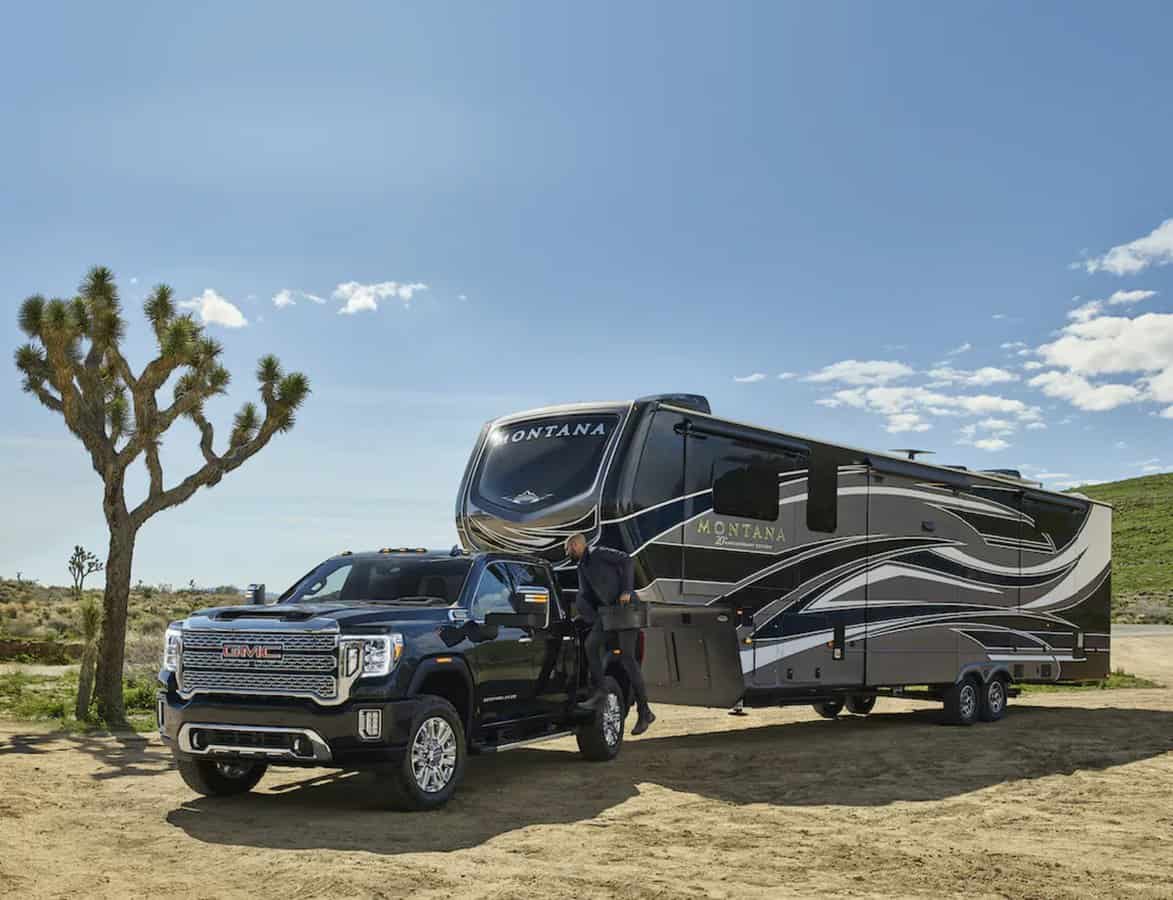
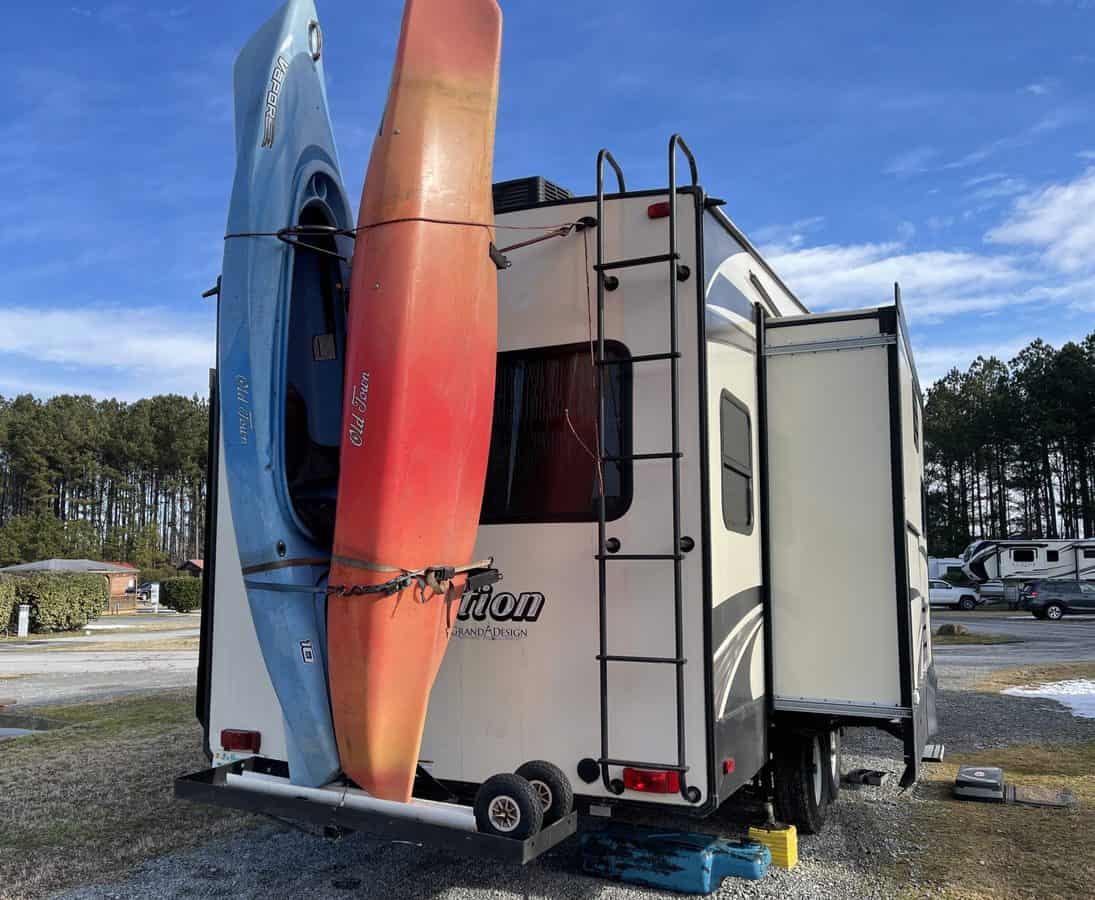
Let me add two things I see that makes a big difference to us newbees that a lot of people don’t discuss.
1) Get into a positive mental mind set. A big part of learning to backing up a trailer is to be confident you can do it. Think courage! (Repeat “I can do it, yes I can, yes I can”….).
2) Don’t be looking around to see who is watching. Who cares! Stop feeling insecure and worrying what everybody else thinks. Stay focused on ‘you’ and what your goal is and what your trying to learn.
Mentally get yourself in the right frame of mind, take a deep breath and tell yourself you can do it. Stay positive! And who cares who is watching. Don’t be looking around to see who is watching either. It’s like being afraid of heights and looking over a cliff, what does that do for ya! So ignore people, don’t look at them, don’t gaze around at the neighbours, be task oriented, get out and look at the campsite before backing in, look at your campsite only, neighbours don’t exist at this moment. Looking around other than at your own campsite will just rattle your insecure nerves, so don’t do it!
I’m still learning to back up our 41 ft, 5th wheel without a backup camera (it died upon transferring it to this new rig) and frankly if anyone watching is finding my attempts to back in a campsite so entertaining, then “If you can do better! Great! Hop into my truck and take over!”. Oh no, I don’t go looking around for the help, remember they don’t exist, but when help walks up to you, well okay then “hiya!” don’t be shy to invite the help when that occurs. Oh sure I’m slowly learning… a neighbour miraculously just appearing in front of me doesn’t always happen, the point is get mentally confident you can do it and just keep trying. The better frame of mind your in, produces better back-in attempts.
(I’ve never owned a truck before, especially a dually, and never backed any kind of trailer up before either, all I care about is keeping this experience positive; not damaging my truck or trailer, and figuring out how I can get this trailer parked; how long it takes to do it, whooooo cares! Nobody around you was born with back-in auto pilot either.) Cheers.